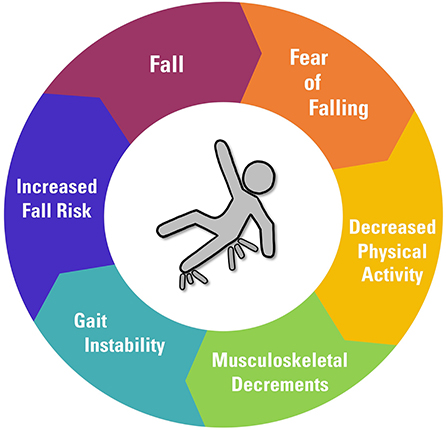Little Known Questions About Dementia Fall Risk.
The Best Guide To Dementia Fall Risk
Table of ContentsAll About Dementia Fall RiskSome Ideas on Dementia Fall Risk You Should KnowHow Dementia Fall Risk can Save You Time, Stress, and Money.The Facts About Dementia Fall Risk Revealed
An autumn danger analysis checks to see just how likely it is that you will drop. The assessment normally consists of: This consists of a collection of inquiries about your general wellness and if you've had previous falls or troubles with equilibrium, standing, and/or walking.Treatments are suggestions that may lower your threat of falling. STEADI includes three steps: you for your threat of dropping for your risk elements that can be boosted to attempt to prevent falls (for example, equilibrium problems, damaged vision) to reduce your danger of falling by utilizing efficient techniques (for instance, supplying education and resources), you may be asked a number of questions including: Have you dropped in the previous year? Are you worried concerning dropping?
If it takes you 12 secs or more, it may suggest you are at higher danger for a fall. This examination checks stamina and balance.
Relocate one foot midway onward, so the instep is touching the big toe of your other foot. Move one foot fully in front of the other, so the toes are touching the heel of your other foot.
How Dementia Fall Risk can Save You Time, Stress, and Money.
Most falls happen as an outcome of several adding factors; for that reason, taking care of the threat of dropping starts with identifying the elements that add to drop threat - Dementia Fall Risk. A few of the most pertinent threat variables include: Background of prior fallsChronic clinical conditionsAcute illnessImpaired gait and balance, reduced extremity weaknessCognitive impairmentChanges in visionCertain risky drugs and polypharmacyEnvironmental aspects can also increase the risk for falls, consisting of: Inadequate lightingUneven or harmed flooringWet or unsafe floorsMissing or harmed hand rails and grab barsDamaged or incorrectly equipped equipment, such as beds, mobility devices, or walkersImproper usage of assistive devicesInadequate guidance of the people residing in the NF, consisting of those that show aggressive behaviorsA successful fall risk management program calls for a thorough scientific evaluation, with input from all members of the interdisciplinary team

The care plan ought to also consist of treatments that are system-based, such as those that advertise a risk-free environment (appropriate lighting, hand rails, grab bars, etc). The performance of the treatments should be examined regularly, and the treatment plan revised as required to mirror modifications in the loss danger assessment. Executing a fall risk administration system making use of evidence-based best technique can decrease the occurrence of drops in the NF, while restricting the possibility for fall-related injuries.
Get This Report on Dementia Fall Risk
The AGS/BGS standard advises evaluating all adults aged 65 years and older for autumn risk each year. This testing contains asking individuals whether they have actually dropped 2 or more times in the previous year or sought site web clinical attention for an autumn, or, if they have not dropped, whether they feel unstable when walking.
People that have fallen once without injury must have their equilibrium and stride examined; those with gait or equilibrium problems need to obtain added assessment. A background of 1 loss without injury and without stride or equilibrium problems does not warrant further analysis past continued yearly fall danger screening. Dementia Fall Risk. A fall risk analysis is required as part of the Welcome to Medicare examination

The Facts About Dementia Fall Risk Uncovered
Documenting a falls history is among the high quality indications for loss prevention and monitoring. A crucial part of risk evaluation is a medicine review. A number of courses of medications increase autumn risk (Table 2). copyright medications in particular are independent predictors of falls. These drugs have a tendency to be sedating, change the sensorium, and harm balance and navigate to this site gait.
Postural hypotension can commonly be relieved by reducing the dose of blood pressurelowering medications and/or quiting drugs that have orthostatic hypotension as a side effect. Use above-the-knee support hose pipe and resting with the head of the bed raised may additionally decrease postural reductions in blood stress. The recommended elements of a fall-focused checkup are shown in Box 1.

A TUG time more than or equivalent to 12 seconds recommends high fall danger. The 30-Second Chair Stand test examines reduced extremity stamina and equilibrium. Being unable to stand from a chair of knee elevation without making use of one's arms indicates boosted autumn risk. The 4-Stage Balance examination analyzes static balance by having the patient stand in 4 positions, each considerably much more difficult.